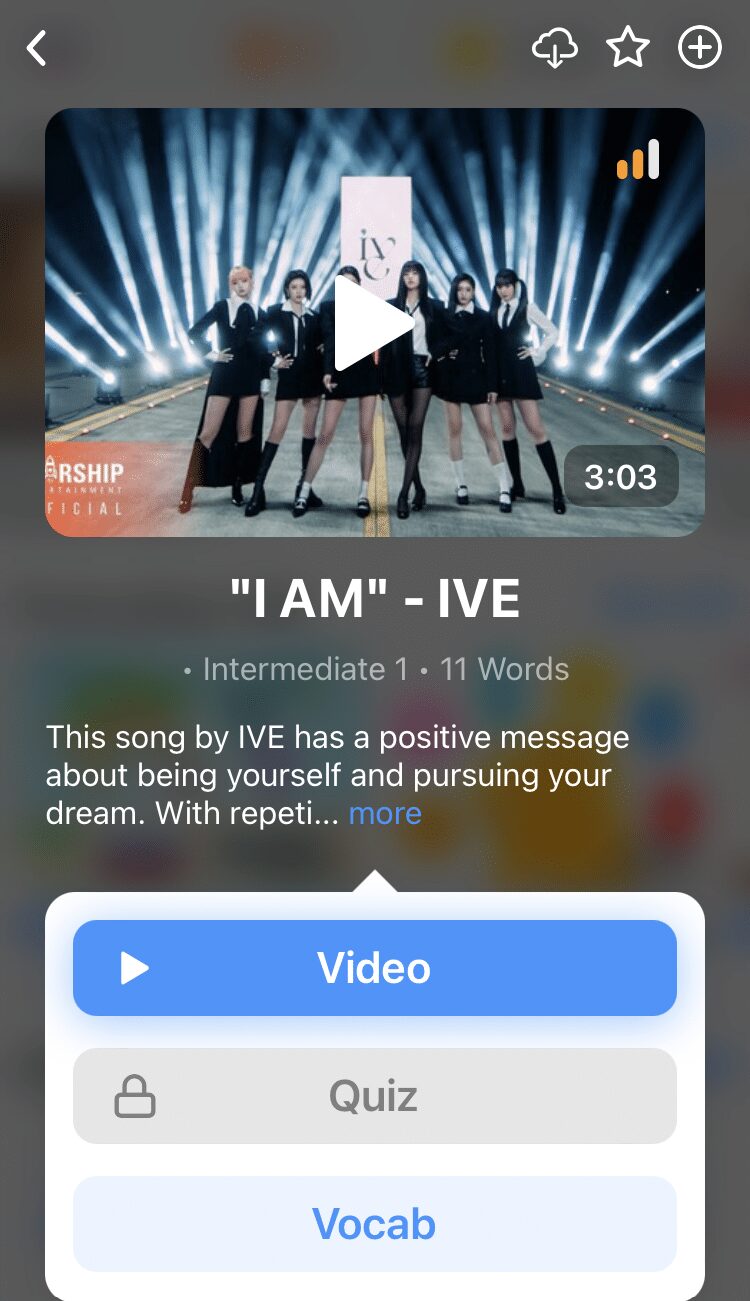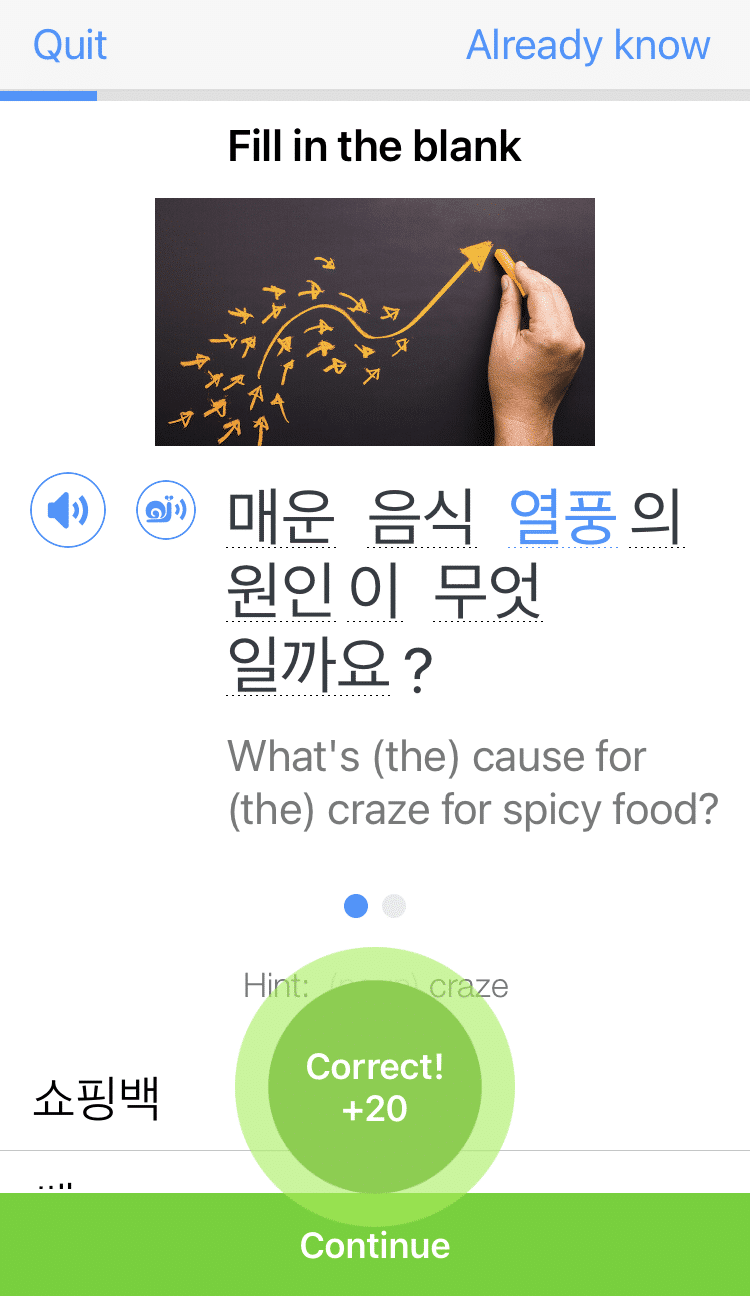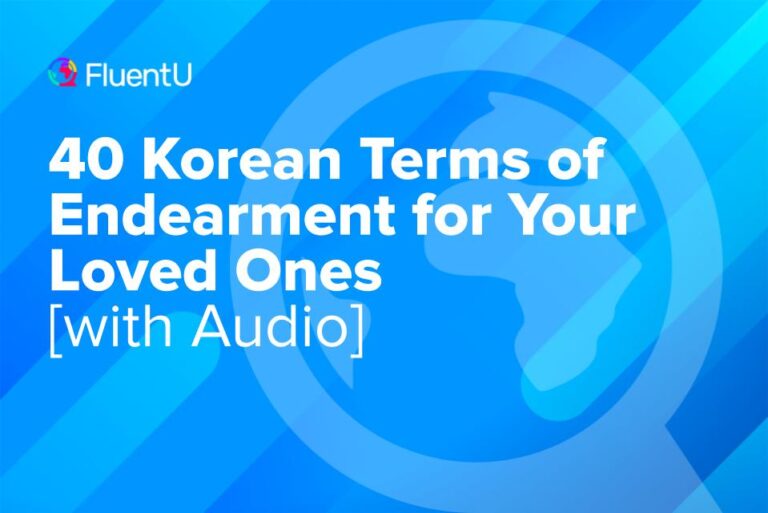Contents
- Common Colors in Korean
- 노란색 (noransaek) — Yellow
- 빨간색 (ppalgansaek) — Red
- 파란색 (paransaek) — Blue
- 검은색 (geomeunsaek) — Black
- 흰색 (huinsaek) — White
- 주황색 (juhwangsaek) — Orange
- 초록색 (choroksaek) — Green
- 보라색 (borasaek) — Purple
- 갈색 (galsaek) — Brown
- 분홍색 (bunhongsaek) — Pink
- 회색 (hoesaek) — Gray
- 남색 (namsaek) — Indigo
- 금색 (geumsaek) — Gold
- 은색 (eunsaek) — Silver
- 적갈색 (jeokgalsaek) — Maroon
- 연두색 (yeondusaek) — Light green
- 하늘색 (haneulsaek) — Sky blue
- 연보라색 (yeonborasaek) — Light purple
- 청록색 (cheongroksaek) — Turquoise
- 카키색 (kakisaek) — Khaki
- What Is “Color” in Korean?
- How to Use Colors to Describe Objects in Korean
- Resources for Practicing Colors in Korean
- And One More Thing...
Quick Guide to Colors in Korean

When you’re speaking Korean, you’ll have to use color words more than once in a blue moon.
Color words are used a little differently in Korean than they are in English.
However, by the time you reach the end of this article, you should have a clear understanding of these differences.
Keep reading to improve your vocabulary and master colors in Korean!
Download: This blog post is available as a convenient and portable PDF that you can take anywhere. Click here to get a copy. (Download)
Common Colors in Korean
Let’s take a look at 20 common colors in Korean. When using the colors yellow, red, blue, black or white, you can drop the word 색 (color) from the end of the color. More on that below!
You can click on the name of each color to hear how it’s pronounced.
노란색 (noransaek) — Yellow
노란 오리예요. — It’s a yellow duck.
저는 노란색을 좋아해요. — I like the color yellow.
빨간색 (ppalgansaek) — Red
빨간 트럭이에요. — It’s a red truck.
저는 빨간색 안 좋아해요. — I don’t like the color red.
파란색 (paransaek) — Blue
파란 침대예요. — It’s a blue bed.
저는 파란색을 정말 좋아해요. — I really like the color blue.
검은색 (geomeunsaek) — Black
검은 곰이에요. — It’s a black bear.
그는 검은색을 좋아해요. — He likes the color black.
흰색 (huinsaek) — White
흰 눈이에요. — It’s white snow.
그는 흰색을 안 좋아해요. — He doesn’t like the color white.
주황색 (juhwangsaek) — Orange
주황색 당근이에요. — It’s an orange carrot.
그는 주황색을 정말 좋아해요. — He really likes the color orange.
초록색 (choroksaek) — Green
초록색 잎이에요. — It’s a green leaf.
그녀는 초록색을 좋아해요. — She likes the color green.
보라색 (borasaek) — Purple
보라색 공룡이에요. — It’s a purple dinosaur.
그녀는 보라색을 싫어해요. — She hates the color purple.
갈색 (galsaek) — Brown
갈색 토끼예요. — It’s a brown rabbit.
우리 엄마는 갈색을 좋아해요. — My mom likes the color brown.
분홍색 (bunhongsaek) — Pink
분홍색 자전거예요. — It’s a pink bike.
우리 아빠는 분홍색을 좋아해요. — My dad likes the color pink.
회색 (hoesaek) — Gray
그 애는 눈이 회색이에요. — He has gray eyes.
우리 엄마는 회색을 싫어해요. — My mom doesn’t like the color gray.
남색 (namsaek) — Indigo
남색 책이에요. — It’s an indigo book.
우리 아빠는 남색 안 좋아해요. — My dad doesn’t like the color indigo.
금색 (geumsaek) — Gold
금색 트로피예요. — It’s a gold trophy.
저는 금색을 좋아해요. — I love the color gold.
은색 (eunsaek) — Silver
은색 달이에요. — It’s a silver moon.
그는 은색을 좋아해요. — He likes the color silver.
적갈색 (jeokgalsaek) — Maroon
적갈색 스웨터예요. — It’s a maroon sweater.
우리 할아버지는 적갈색을 좋아해요. — My grandfather likes the color maroon.
연두색 (yeondusaek) — Light green
연두색 문이에요. — It’s a light green door.
우리 할머니는 연두색을 좋아하세요. — My grandmother likes the color light green.
하늘색 (haneulsaek) — Sky blue
하늘색 달걀이에요. — It’s a sky blue egg.
우리 할아버지는 하늘색을 싫어하세요. — My grandfather hates the color sky blue.
연보라색 (yeonborasaek) — Light purple
연보라색 드레스예요. — It’s a light purple dress.
우리 엄마는 연보라색을 좋아해요. — My mom likes the color light purple.
청록색 (cheongroksaek) — Turquoise
청록색 목걸이예요. — It’s a turquoise necklace.
제 친구는 청록색을 좋아해요. — My friend likes the color turquoise.
카키색 (kakisaek) — Khaki
카키색 셔츠예요. — It’s a khaki shirt.
제 친구는 카키색을 싫어해요. — My friend hates the color khaki.
What Is “Color” in Korean?
If you want to talk about colors in Korean, a word that you need to learn is the word for “color.” There are a couple of ways you can say “color” in Korean.
If you’re referring to color in general, you can use the word 색깔, such as in the sentence “The sky is a dark color.”
Here are a few examples of how you would use 색깔 in a sentence:
이 립스틱은 색깔이 좋아요. — This lipstick is a good color.
8가지 색깔이 있어요. — We have eight different colors.
If you’re referring to a specific color, the word 색 is added to the end of the specific color, such as blue or green.
For example, the color green is 초록색. This is the form of the word you’ll see in a Korean dictionary.
How to Use Colors to Describe Objects in Korean
Let’s also have a closer look at how to grammatically use color words in Korean sentences.
The colors red, blue, yellow, black and white follow a different pattern than the other colors. When you’re using these colors to describe an object, you can drop the ending 색.
For example, as we saw previously, the Korean word for yellow is 노란색. However, if you want to say “a yellow car,” you can drop 색 and simply say 노란 차.
On the other hand, if you wanted to describe an orange car, you’d have to keep the 색 ending and say 주황색 차.
Using Korean Colors at the End of a Sentence
The colors red, blue, yellow, black and white can also be used at the end of a sentence. When doing this, these colors take on a slightly different form.
| Korean | English |
|---|---|
| 노랗다 | Yellow |
| 빨갛다 | Red |
| 파랗다 | Blue |
| 하얗다 | White |
| 까맣다 | Black |
You can use this sentence structure to say that an object is a certain color. Let’s look at some examples.
The first example for each is in the Korean infinitive form, and the second example is conjugated in the polite informal conjugation.
책이 노랗다.
— The book is yellow. (infinitive form)
책이 노래요.
— The book is yellow. (polite informal conjugation)
새가 빨갛다.
— The bird is red. (infinitive form)
새가 빨개요.
— The bird is red. (polite informal conjugation)
차가 파랗다.
— The car is blue. (infinitive form)
차가 파래요.
— The car is blue. (polite informal conjugation)
책이 까맣다.
— The book is black. (infinitive form)
책이 까매요.
— The book is black. (polite informal conjugation)
개가 하얗다.
— The dog is white. (infinitive form)
개가 하얘요.
— The dog is white. (polite informal conjugation)
If you want to talk about the color of an object and need to use a different color than the five above (red, blue, yellow, black and white), you can simply add the verb “to be” to the end of the color name.
For example, the word for pink is 분홍색. If you want to say “The pen is pink,” you can say it the following way:
펜이 분홍색이다.
— The pen is pink. (infinitive form)
펜이 분홍색이에요.
— The pen is pink. (polite informal conjugation)
Resources for Practicing Colors in Korean
Now that you know how to use color words, learning the name for each color is a simple matter of memorization. Here are some resources you can use to help with your learning.
- Quizlet. Studying with flashcards is a simple way to improve your vocabulary. This set from Quizlet covers 11 of the most common colors in Korean. You can use several different study modes, such as playing games or taking a written test, to assess your mastery of the vocabulary.
- Sporcle. If you want to test your knowledge of Korean colors, this quiz includes 12 of the most common colors in Korean. See how many you can name before time runs out!
- How to Study Korean. If you want to dive deeper into how to use Korean color words grammatically, this explanation from How to Study Korean offers a great breakdown of the different ways in which colors can fit into sentences.
- FluentU. You can use the language learning program FluentU to look for videos containing color words and hear them used by native speakers.
FluentU takes authentic videos—like music videos, movie trailers, news and inspiring talks—and turns them into personalized language learning lessons.
You can try FluentU for free for 2 weeks. Check out the website or download the iOS app or Android app.
P.S. Click here to take advantage of our current sale! (Expires at the end of this month.)
Now that you know your colors in Korean, you can listen out for them during your Korean studies.
What color is your favorite food? What color is your shirt? What color is your phone? If you want to become fluent in Korean, you’ll need to practice saying your colors every day.
As you’re going through your daily routine, try naming the colors of things you see around you for additional practice.
Good luck!
Download: This blog post is available as a convenient and portable PDF that you can take anywhere. Click here to get a copy. (Download)
And One More Thing...
If you enjoyed this post, you're already halfway to having the time of your life learning Korean with FluentU!
FluentU makes it possible to learn with K-pop videos, funny commercials, entertaining web series and more. Just a quick look will give you an idea of the variety of FluentU videos on offer:

FluentU really takes the grunt work out of learning languages, leaving you with nothing but engaging, effective and efficient learning. It's already hand-picked the best videos for you (which are organized by level and topic), so all you have to do is simply choose any video that strikes your fancy to get started.
Each word in the interactive captions comes with a definition, audio, image, example sentences and more.

Access a complete interactive transcript of every video under the Dialogue tab, and easily review words and phrases from the video under Vocab.

You can use FluentU’s unique Quiz Mode to learn the vocabulary and phrases from the video through fun questions.

FluentU keeps track of what you're learning, and tells you exactly when it's time for review, giving you a 100% personalized experience.
Review sessions use video context to help embed the words in your memory.
Start using the FluentU website on your computer or tablet or, better yet, download the FluentU app from the iTunes or Google Play store. Click here to take advantage of our current sale! (Expires at the end of this month.)








